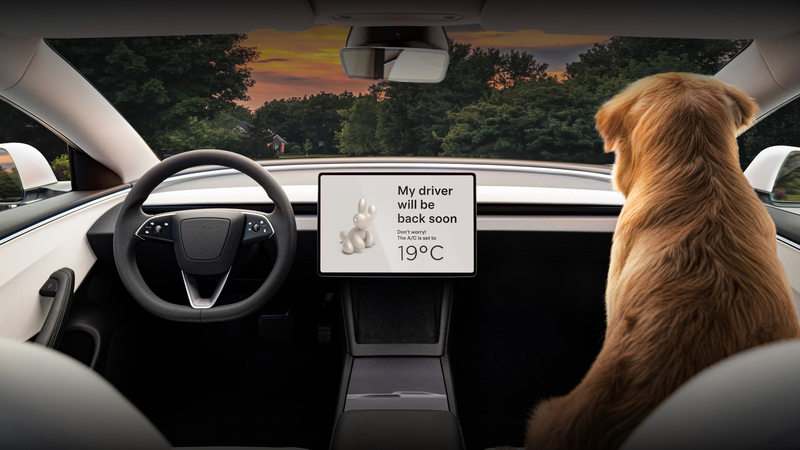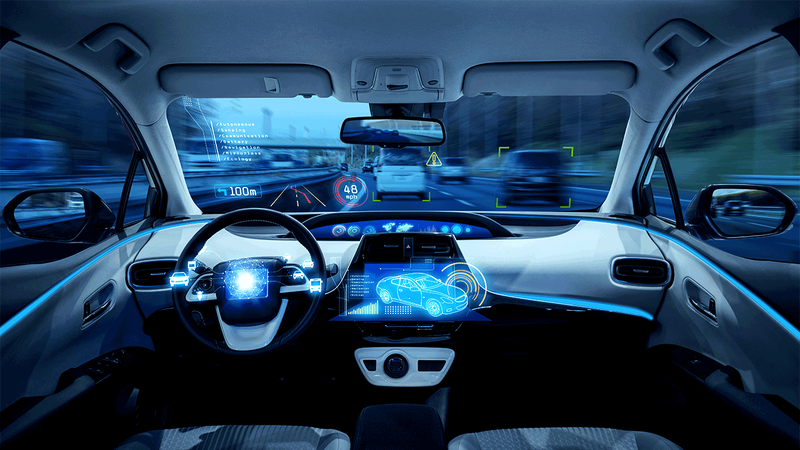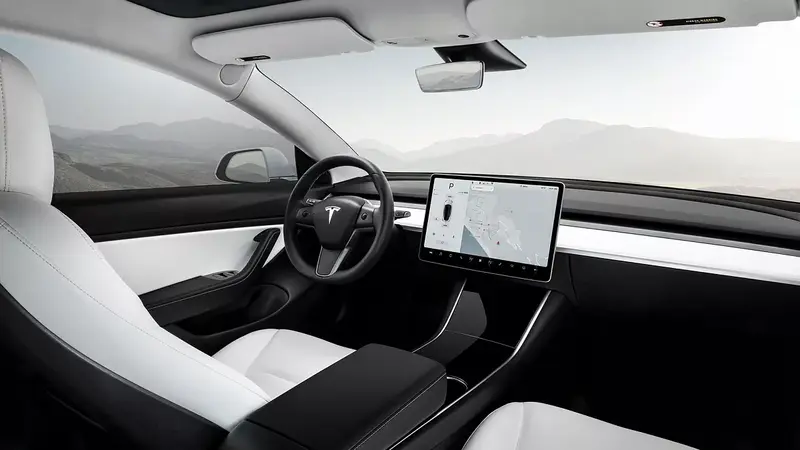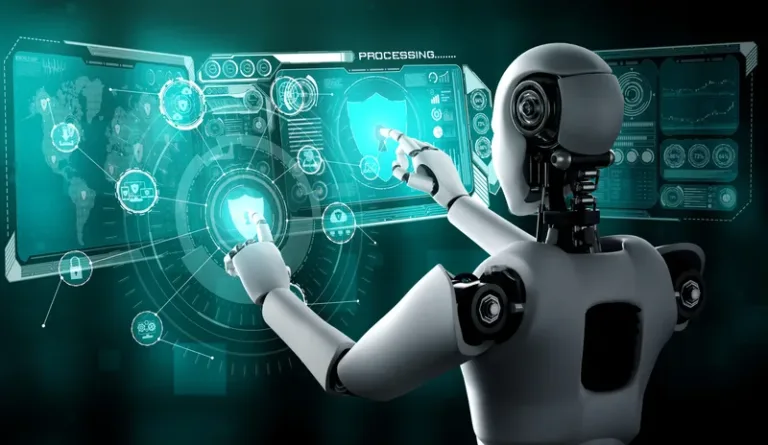Quick Overview
Self-driving automobiles, also known as autonomous vehicles, are among the most powerful examples of artificial intelligence (AI) in modern technology. With features like increased safety, increased performance, and more convenience, these vehicles have the potential to completely transform the transportation industry. The role that artificial intelligence (AI) plays in self-sufficient structures is growing as we look to the future. This blog examines the obstacles that lay ahead, what to expect from next self-sustaining structures, and how AI is influencing the development of self-using motors.
Understanding Autonomous Cars
Prior to delving into the intricacies of artificial intelligence’s contribution to self-driving cars, it’s critical to comprehend the definition and classification of autonomous vehicles.
Levels of Autonomy
The Society of Automotive Engineers has classified autonomous vehicles into tiers according to their capabilities (SAE). From 0 (no automation) to 5 (complete automation), these levels are as follows:
- Level0: All tasks are performed by human drivers; no automation.
- Level 1: Driver Assistance provides features like adaptive cruise control.
- Level 2: Some Automation While they can manage certain driving responsibilities, the automobiles still need human supervision.
- Level 3: Conditional Automation: While most driving responsibilities can be handled by the cars on their own, there are times when they require human intervention.
- Level 4: High Automation: Without human input, the autos can function independently in certain environments or geofenced locations.
- Level 5: Complete Automation Without human assistance, the car is capable of driving itself in any situation.

Core Components of Autonomous Vehicles
For navigation and decision-making, autonomous cars use a mix of sensors, computer hardware, and AI algorithms. Important elements consist of:
- Lidar, radar, cameras, and ultrasonic sensors are among the sensors that offer a thorough perspective of the autos in the vicinity.
- Computing Hardware: Data processing and decision-making are handled by high-performance CPUs and GPUs.
- AI Algorithms: These algorithms use computer vision and machine learning to understand sensor data and drive the car.
Role of AI in Autonomous Cars
The core of autonomous driving technology is artificial intelligence (AI), which allows cars to see their surroundings, make judgement calls, and drive safely. The following are some ways AI benefits certain facets of autonomous systems:
Perception and Sensing
Perception systems driven by AI analyse sensor data to build a comprehensive picture of the surroundings around the car.
- Computer Vision: In order to detect objects, identify traffic signs, and evaluate road conditions, machine learning models—in particular, deep learning neural networks—analyze camera feeds. To increase precision and resilience, these models are trained on large datasets.
- Sensor Vision: In sensor fusion, data from various sensors (cameras, radar, and lidar) is combined by AI algorithms to produce a single, cohesive image of the surroundings. This fusion lowers the possibility of false positives or negatives while improving object detection.
Decision-Making and Planning
After the vehicle’s surroundings are comprehended, artificial intelligence (AI) takes over decision-making and action planning.
- Path Planning: Taking into account variables like traffic, road conditions, and obstructions, AI algorithms decide the best course for the car to take. Path planning methods include deep reinforcement learning, RRT (Rapidly-exploring Random Tree), and A* search.
- Behaviour Prediction: AI systems make predictions about how other drivers, including pedestrians and other cars, will behave. The autonomous car uses this prediction to foresee possible risks and make preemptive judgements.
Control and Execution
The planned route and the observed surroundings are used by AI to regulate the vehicle’s movement.
- Motion Control: AI algorithms modify the car’s braking, acceleration, and steering to keep it moving safely and smoothly along the predetermined route. Commonly employed methods include model predictive control and PID (Proportional-Integral-Derivative) control.
- Adaptive Control System: AI makes adaptive control systems possible, which modify a vehicle’s behaviour in response to varying environmental factors like weather and fluctuations in the road surface.
Future Developments in Autonomous Cars
The following significant advancements in AI technology are anticipated to influence the direction of self-driving automobiles in the future:
Enhanced AI Algorithms
More sophisticated AI algorithms will be useful for driverless vehicles in the future, including:
- Better Computer Vision: Continuous developments in deep learning and neural networks will improve computer vision systems’ accuracy and dependability, enabling cars to comprehend and interpret complicated driving situations more effectively.
- Advanced Behaviour Prediction: Artificial intelligence (AI) models will get more adept at forecasting other drivers’ actions, which will enhance the car’s capacity to recognise and respond to possible dangers.

Integration of 5G Technology
The inclusion of 5G technology would enable faster and more reliable communication between autonomous vehicles and infrastructure.
- Vehicle-to-Everything (V2X) Communication: 5G will enable real-time communication between infrastructure such as visitor signals, motors, and other devices. By enabling cars to exchange information about road conditions, site visitors’ compliance with traffic flow, and potential hazards, this communication will enhance coordination and safety.
- Enhanced Data Processing: Real-time updates and better decision-making will be possible because to 5G’s high bandwidth and low latency, which will enable more effective data processing and transfer.
Advances in Sensor Technology
Advanced sensors in upcoming self-driving cars will deliver more precise and comprehensive environmental data.
- High-Resolution Lidar: As lidar technology advances, longer-range and higher-resolution sensors will be available, which will enhance object recognition and spatial awareness.
- Fusion of Multi-Modal Sensors: By combining several sensor kinds—such as thermal and hyperspectral sensors—a deeper comprehension of the driving environment will be possible.
Greater Focus on Safety and Security
As driverless vehicles proliferate, security and safety will always come first.
- Strong Safety Protocols: In order to manage edge cases and unforeseen circumstances, AI systems will integrate strong safety protocols. This includes sophisticated techniques for system dependability testing and validation.
- Cybersecurity precautions: To guard against hacking and data breaches, cybersecurity precautions will be essential as autonomous vehicles become networked. AI will be used to identify and lessen cybersecurity risks.
Challenges and Considerations
Even though autonomous vehicles have a lot of potential benefits, there are a few issues and concerns that need to be taken into account:
Ethical and Legal Issues
The use of driverless cars has moral and legal concerns, including
- Decision-Making in Dilemmas: How should an autonomous vehicle make ethical decisions in instances where harm is unavoidable? One essential component of AI development is addressing these ethical conundrums.
- Liability and Insurance: It can be difficult to establish who would be at fault in an accident involving an autonomous vehicle. To solve these challenges, legal frameworks and insurance arrangements will need to change.
Technical Challenges
Technical challenges include:
- Managing Unpredictable Events: Autonomous cars need to be able to deal with uncommon and unpredictable events, such odd weather or sudden road closures.
- Ensuring Robustness: Safety and dependability depend on AI algorithms being able to withstand adversarial attacks and edge cases.
Public Acceptance and Adoption

Widespread use of autonomous vehicles depends on gaining public acceptance and trust.
- Establishing Trust: The public’s trust must be established by proving the safety and dependability of autonomous vehicles via rigorous testing and practical experience.
- Resolving issues: Gaining acceptance will depend on resolving issues around privacy, the loss of jobs, and the effect on transportation systems.
The development and application of AI in self-reliant systems is crucial to the advancement and use of self-driving cars. As we move closer to 2024 and beyond, advancements in AI generation will continue to push for advancements in self-sustaining car technology, perhaps leading to more convenient, safe, and environmentally friendly transportation.
Despite the significant progress that has been made, there are still obstacles to overcome, including as technological difficulties, moral dilemmas, and public acceptance. Through tackling these obstacles and utilising the latest developments in artificial intelligence, we may anticipate a future where autonomous vehicles become an essential component of our mobility environment.
As technology advances, maintaining up to date on current developments and comprehending how artificial intelligence is influencing the future of self-driving cars will be crucial for navigating this fascinating and game-changing field.
For more blogs on new latest mobile Technology visit TECHMOBUZZ or check us on Facebook.



